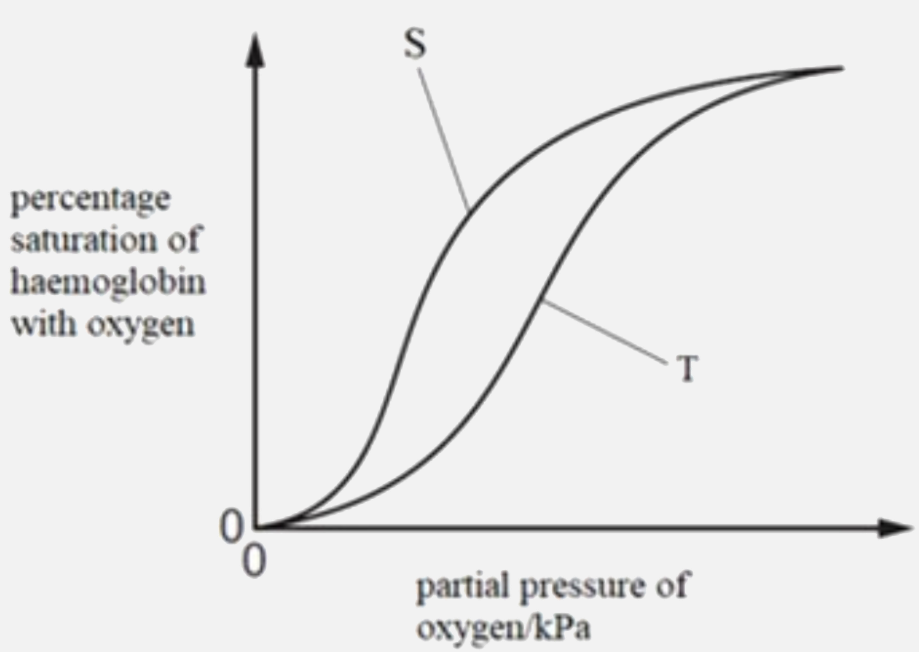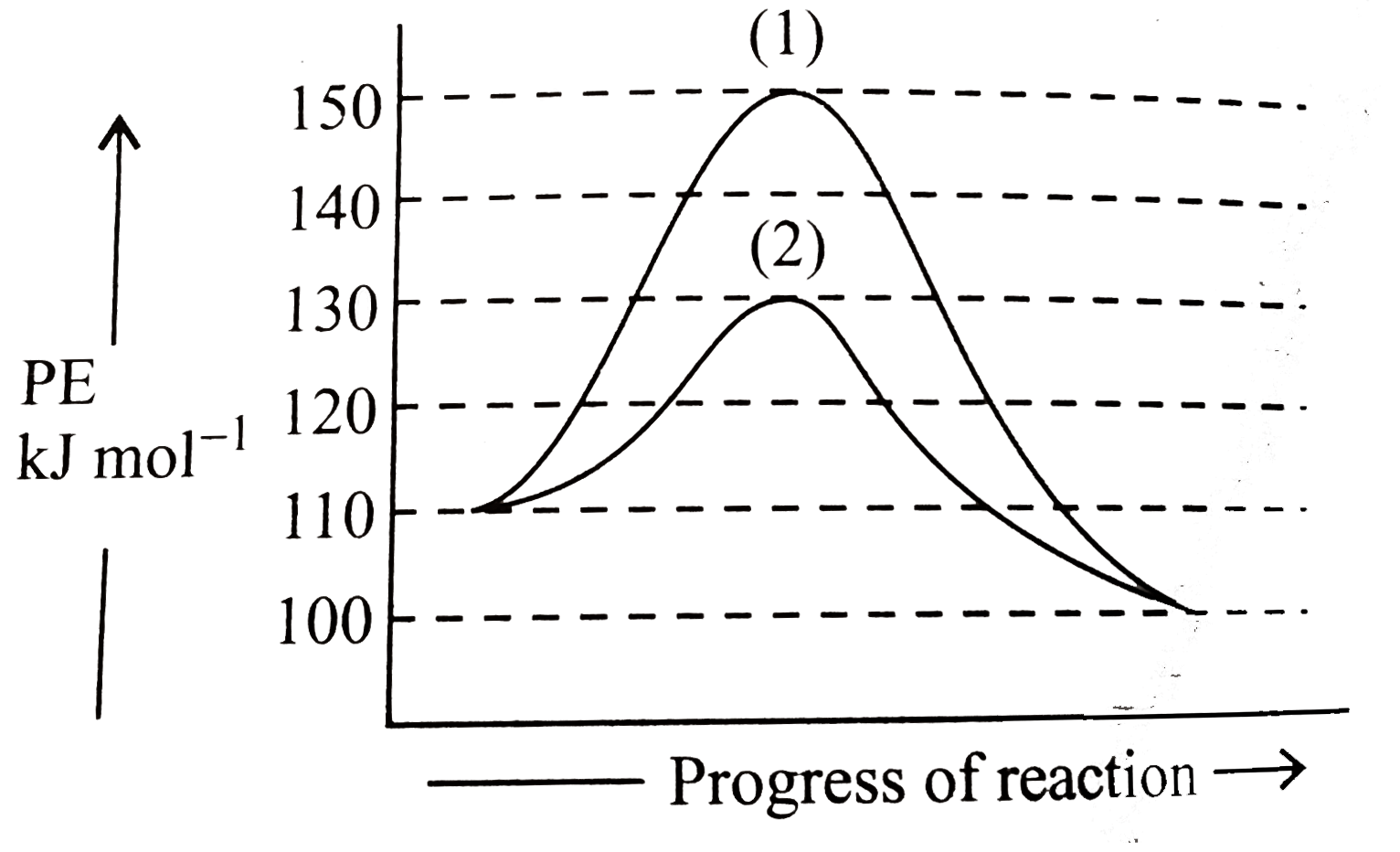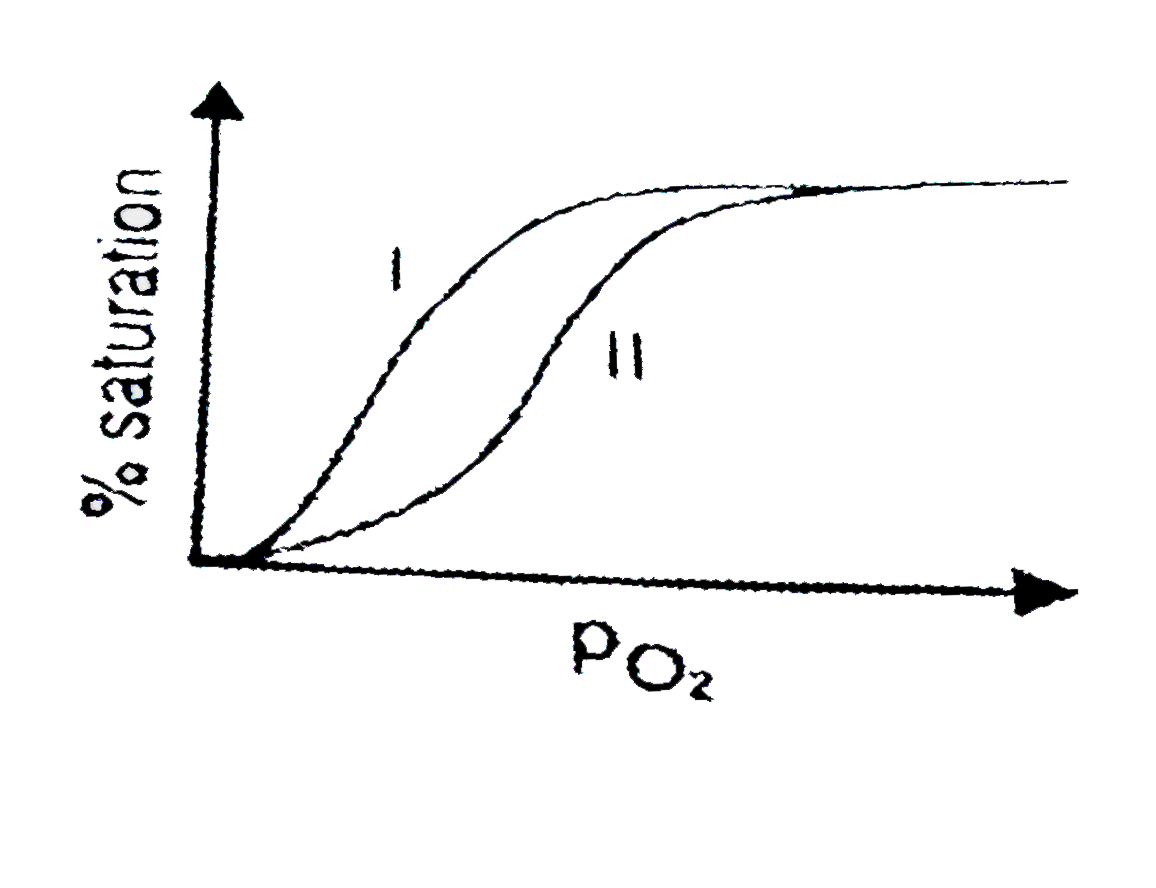Read the following statemens with regard to oxyhaemoglobin dissociation curve.
I. The curve is …..A….. Shaped under normal conditions.
II. ….B…has an affinity to bind with deoxygented . Haemoglobin by producing conformational changes in it.
III. HTe curve is .....C....in the presence of weak electrolytes. Identify A, B and C.
sigmoid, Carbon monoxide, sigmoid
Sigmoid, 2,3 - DPG, hyperbolic
Sigmoid , Oxygen, hyperbolic
Sigmoid, Carbon monoxide , straight
The correct Answer is:B
Step by step video, text & image solution for Read the following statemens with regard to oxyhaemoglobin dissociation curve. I. The curve is …..A….. Shaped under normal conditions. II. ….B…has an affinity to bind with deoxygented . Haemoglobin by producing conformational changes in it. III. HTe curve is .....C....in the presence of weak electrolytes. Identify A, B and C. by Biology experts to help you in doubts & scoring excellent marks in Class 12 exams.
Topper's Solved these Questions
- BOOK - ARIHANT NEETCHAPTER - BREATHING AND EXCHANGE OF GASES EXERCISE - Chapter exercises B (Medical entrances special format questions )21videos
BREATHING AND EXCHANGE OF GASES
- BOOK - ARIHANT NEETCHAPTER - BREATHING AND EXCHANGE OF GASES EXERCISE - Chapter exercise C (Medical entrances gallery )54videos
BREATHING AND EXCHANGE OF GASES
- BOOK - ARIHANT NEETCHAPTER - BREATHING AND EXCHANGE OF GASES EXERCISE - Check point 24.320videos
BREATHING AND EXCHANGE OF GASES
- BOOK - ARIHANT NEETCHAPTER - BODY FLUID AND CIRCULATIONEXERCISE - MEDICAL ENTRANCES GALLERY COLLECTION OF QUESTIONS ASKED IN NEET AND VARIOUS MEDICAL ENTRANCE EXAMS72videos
BODY FLUID AND CIRCULATION
- BOOK - ARIHANT NEETCHAPTER - CELL CYCLE AND CELL DIVISIONEXERCISE - Chapter Exercises (C) Medical entrances gallery (collection of questions asked in NEET & Various medical entrance exams)63videos
CELL CYCLE AND CELL DIVISION
Similar Questions
The graph shows the oxygen dissociation curves of haemoglobin from two species of mammals, s and T .

Which statements could explain the difference in the oxygen dissociation curves of species S and species T ?
I. Species T has higher haemoglobin concentration in its red blood cells than species S.
II. The haemoglobin in species T has a lower affinity for oxygen than the haemoglobin in species S.
III. Species T may be living at a higher altitudes than species S.View SolutionGiven the following graph.
(a) Calculate ΔH for the reaction and energy of activation for the forward and backward reaction.

(b) Curve (2) is the energy profile in the presence of a catalyst. What is the energy of activation for the two reaction in the presence of a catalyst?
( c) Will the catalyst change the extent of the reaction?View Solution
Knowledge Check
- Question 1 - Select One
Which of the following condition does not result in shifting of oxy-Hb dissociation curve to the right?
I. Increase in pCO2
II. Increase in pH
III. Increase in body temperature
IV. Excess of 2, 3 DPG
Choose the correct option.AI onlyBII onlyCII and III onlyDIII and IV only - Question 2 - Select One
Which statements are correct for oxyhaemoglobin dissociation curve ?
(A) This curve is sigmoid
(B) When CO2 concentration increases, then this curve shifts towards right side
(C) Low temperature is favourable for dissociation of oxygen grom oxyhaemoglobin
(D) Binding of oxygen with haemoglobin is primarily related to partial pressure of O2AABC are correctBABD are correctCOnly A is corrctDBCD are correct - Question 3 - Select One
Consider the following statements regarding compounds which cause global warming. 'X' is a hydrocarbon, A and B are neutral oxides of nitrogen, 'C' is a blue coloured gas and 'D' is released when H2S is reacted with oxygen. Identify the correct statements about X, A, B, C and D.
(I) 'X' is mainly present in natural gas
(II) In A and B one is diamagnetic and another one is paramagnetic.
(III) 'C' can be identified by using liquid element in d-block
(IV) 'D' causes acid rain.AAll are correctBI,II,IIICII,III,IVDI,III,IV
Read the given passage and answer the questions number that follow :
Weak electrolytes like acetic acid have lower degree of dissociation at higher concentrations and hence for such electrolytes, the change in Λm with dilution is due to increase in the degree of dissociation and consequently the number of ions in total volume of solution that contains one mol of electrolyte. In such cases Λm increases steeply on dilution, especially near lower concentrations. Therefore, Λm cannot be obtained by extrapolation of Λm to zero concentration. At infinite dilution (i.e., concentration c → zero) electrolyte dissociates completely (α = 1), but at such low concentration the conductivity of the solution is so low that it cannot be measured accurately. Therefore, Λ∘m for weak electrolytes is obtained by using Kohlrausch law of independence migration of ions.
Why does the change in Λm take place on dilution in case of weak electrolytes ?View SolutionRead the given passage and answer the questions number that follow :
Weak electrolytes like acetic acid have lower degree of dissociation at higher concentrations and hence for such electrolytes, the change in Λm with dilution is due to increase in the degree of dissociation and consequently the number of ions in total volume of solution that contains one mol of electrolyte. In such cases Λm increases steeply on dilution, especially near lower concentrations. Therefore, Λm cannot be obtained by extrapolation of Λm to zero concentration. At infinite dilution (i.e., concentration c → zero) electrolyte dissociates completely (α = 1), but at such low concentration the conductivity of the solution is so low that it cannot be measured accurately. Therefore, Λ∘m for weak electrolytes is obtained by using Kohlrausch law of independence migration of ions.
Why does the change in Am take place on dilution in case of weak electrolytes ?View SolutionConsider the following statements regarding compounds which cause global warming X is a hydrocarbon, A and B are neutral oxides of nitrogen, C is a blue coloured gas and D is released when H2S is reacted with oxygen. Identify the correct statements about X, A , B, C and D.
(I) X is mainly present in natural gas
(II) In A and B one is diamagnetic and another one is paramagnetic
(III) C can be identified by using liquid element in d-block
(IV) D causes acid rainView SolutionHaemoblobin is a Fe containing protein responsible for oxygen transport in the blood. The curves given below idicate the percentage suturation of haemoglobin by O2 as a funcion of partial pressure of O2.
Which of the following statement/s is/are correct for the given curves?
I. In presence of CO2, higher PO2 is needed for a given percentage saturation.
II. In presence of CO2, lower PO2 is needed for a give percentage saturation.
III. The maximum percentgae saturation is not affected by the presence of CO2
IV. In the absence of CO2, maximum saturation of haemoglobin occurs at lower pO2.
 View Solution
View SolutionGo through the following statements (i) the peripheral chemoreceptors for regulation of respiration are located in carotid veins and arch of aorta
(ii) the primary effect of penumotaxic centre is to control the switch off point of inspiratory signal and thus limit inspiraton
(iii) the chemosensitve area fo brain for respiratory control is highly sensitive to O2 concentration
(iv) i case of feital haemoglobin the oxygen haemoglobin dissociation curve is shifted toward left ltrbgt which of these ar correct ?View Solution

